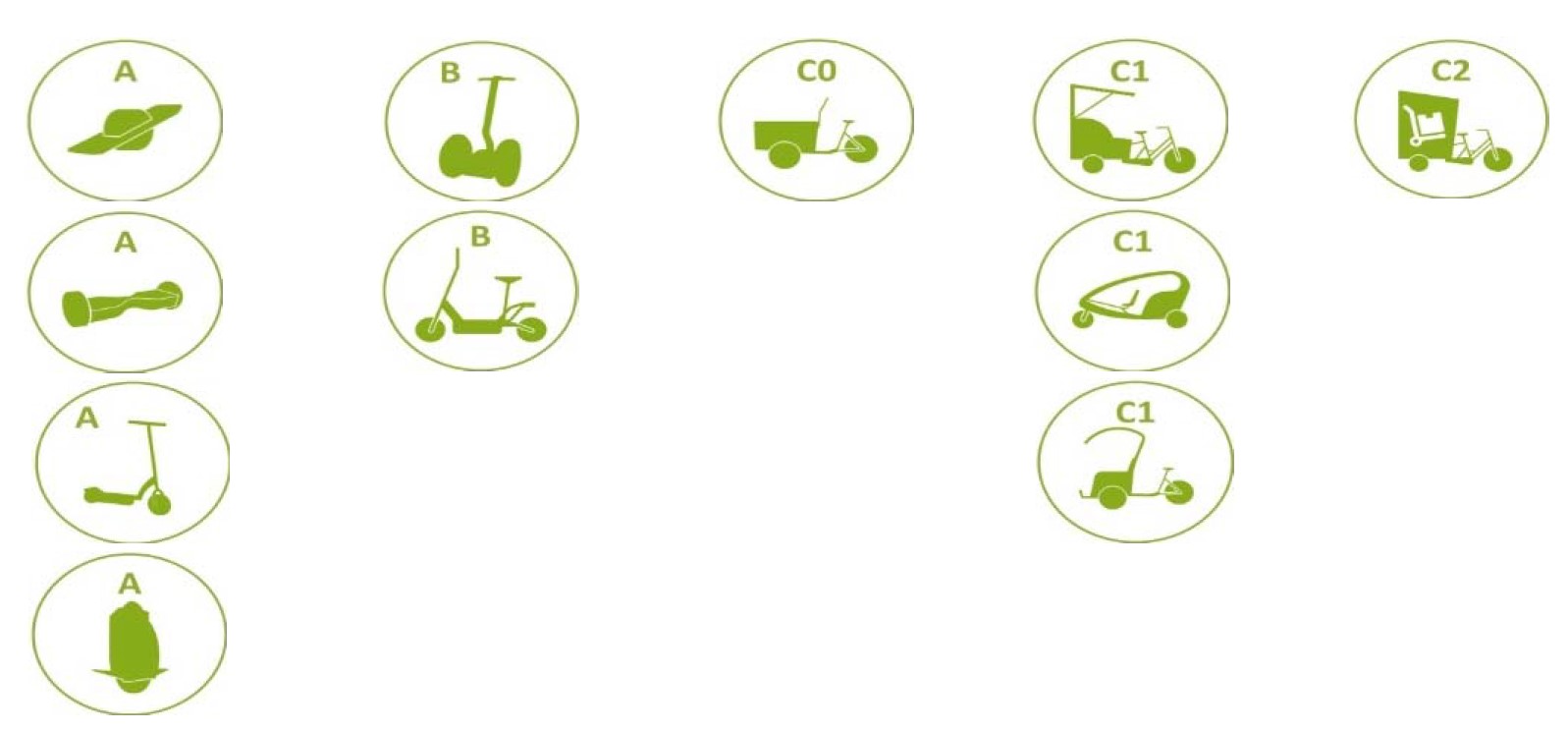EC04 SHARED BICYCLES AND PMV
Public provisions to encourage the use of shared bicycles and personal mobility vehicles

Aim
To reduce the carbon footprint of cycling in the city by optimising its use. Promote the use of bicycles and other VMPs on last mile and tourist journeys instead of cars. Encourage occasional users who do not need a bicycle or other PMV on a daily basis to use them on some of their trips. Increasing public transport coverage
Why?
The reasons behind this type of measure are the same as those used in other measures in this catalogue relating to sustainable modes of transport. But this type of solution will also reduce the carbon footprint of the production of these vehicles.
Implementing bicycle systems or other public PMVs has several advantages:
• It reduces the purchase of these types of vehicles, optimising their use and reducing their carbon footprint.
• It increases the use of this type of vehicle, becoming a catalyst for the use of bicycles or other modes, provided that measures are taken to increase the users’ safety.
• Add one more last mile option, at a lower cost than other types of public transportation.
• It can contribute to an increase in the use of public transport if the two systems are integrated, by increasing their coverage.
• It reduces congestion.
• It allows to manage the demand of transport, increasing the accessibility.
• It increases the city’ s attractiveness for tourism.
• Creates opportunities for advertising and the city branding.
• In the case of bicycles: health benefits.
• Creates local jobs.
How?
As with all measures that represent a major change in the city, political leadership and broad support are needed. Long-term action and investment will be needed to make the system efficient. In any case, the first step will be to set the objectives of the system and carry out a feasibility study, since depending on the type of system and management, the results can be very different. The size of the city also has a great influence on the choice of the system and its management. If the system is based on base stations, it will be necessary to define the network of stations, which must be integrated with the other transport systems. If the system allows picking up and dropping off units anywhere (dockless), it will be necessary to consider the conditions under which companies will be able to operate in the city.
For a system to be successful it must meet the following conditions (ITDP, 2013):
• A dense network of stations, with a distance between them up to 300 m.
• Comfortable vehicles, with special elements that discourage theft or resale, as well as anti-vandalism.
• If you are using bases, a fully automatic system for fixation to them, allowing easy and quick removal and delivery.
• A vehicle location system that identifies both the vehicle and the user.
• Real-time management of station occupancy, relocating units when necessary.
• Real-time information on different platforms.
• Price structure that encourages short trips, so as to maximize the number of trips per unit and day.
Classification of PMVs. Source: Spanish Traffic Department (DGT)
 PMVs are classified according to height and dangerous angles that can cause injury to a person in a hit and run. Dangerous angles are defined as those less than 110° oriented in the direction of advance of the VMP, or towards the driver or passengers.
PMVs are classified according to height and dangerous angles that can cause injury to a person in a hit and run. Dangerous angles are defined as those less than 110° oriented in the direction of advance of the VMP, or towards the driver or passengers.
City Scale Intervention

ISSUES AFFECTED
SUITABLE FOR COMBINING WITH OTHER SOLUTIONS
MEASURING ELEMENTS
Indicator
Main: CO2 reduction by switching from private vehicle to bike trips
Secondary: % of trips from PV to bicycle or PMV
Unit
g CO2
%
Minimum Goal
2 % of trips from PV to bicycle or PMV
Desirable Goal
6 % of trips from PV to bicycle or PMV
Measure method / Formula
Anual Mobility Survey
∆g CO2=A x [B – C] x D
A: % of trips from PV to bicycle
B: PV CO2 Emission Factor (g CO2/km)
C: Bike or PMV CO2 Emission Factor (g CO2/km)
D: Total km travelled
The formula may vary depending on available data.
PLANNING LEVEL
General Planning
Development Planning
Urbanization Detailed Design
PEOPLE INVOLVED
Local Officials
Planning and design team
WHAT SHOULD BE CONSIDERED FOR ITS IMPLEMENTATION?
• PMVs with throttle have no significant health benefits
• Measures will have to be taken to ensure that electric PMVs do not replace foot travel.
• It is necessary to regulate the use of bicycles and VMP in pedestrian spaces.
• The possible abusive use of public space by these parked vehicles.
• Dockless systems can cause discomfort to people with disabilities if they occupy the sidewalks.
• It is necessary to regulate the use of VMPs and their interference with pedestrian routes.
• The management system, with transfers between bases and collection for battery charging can lead to higher emissions than those reduced by mode switching.


















